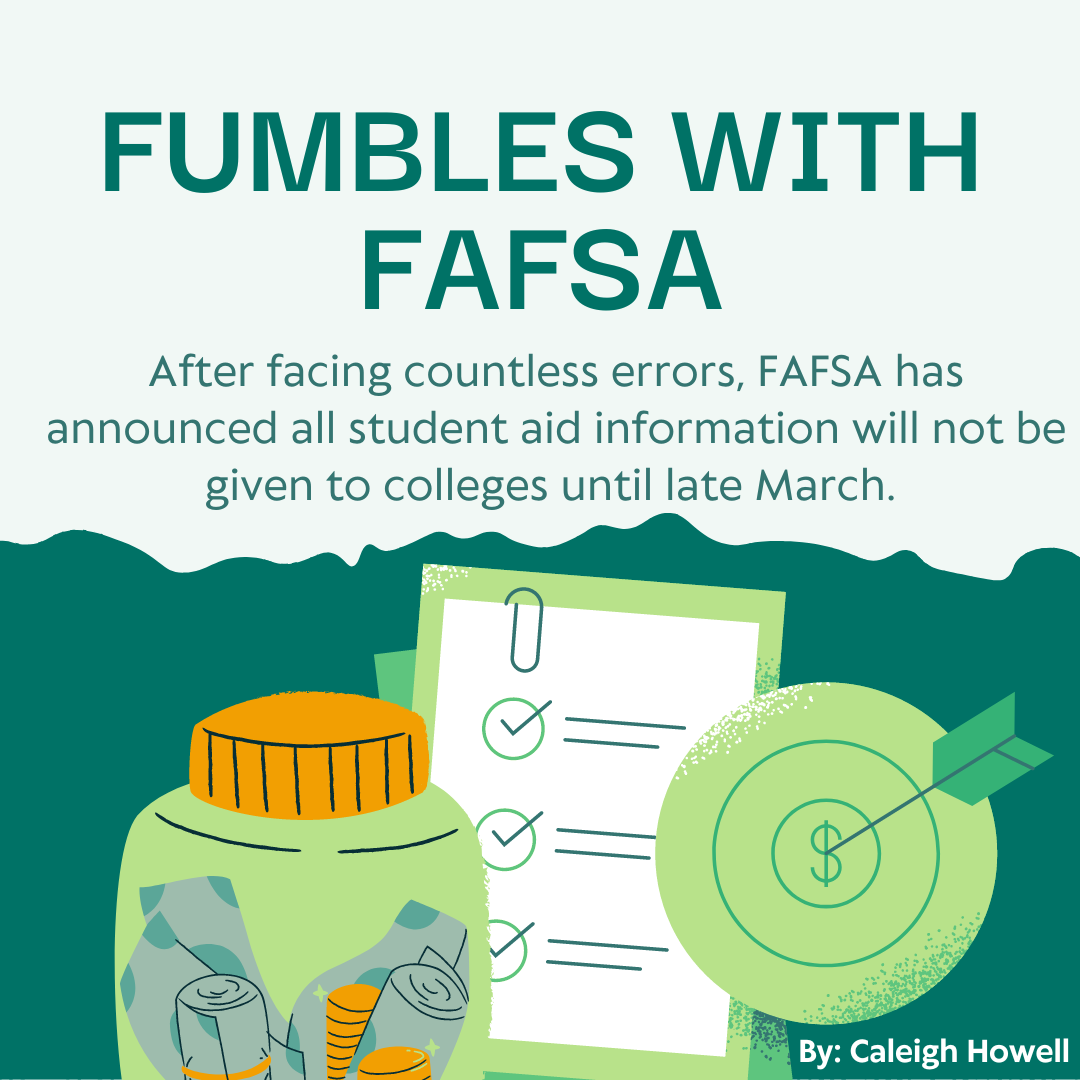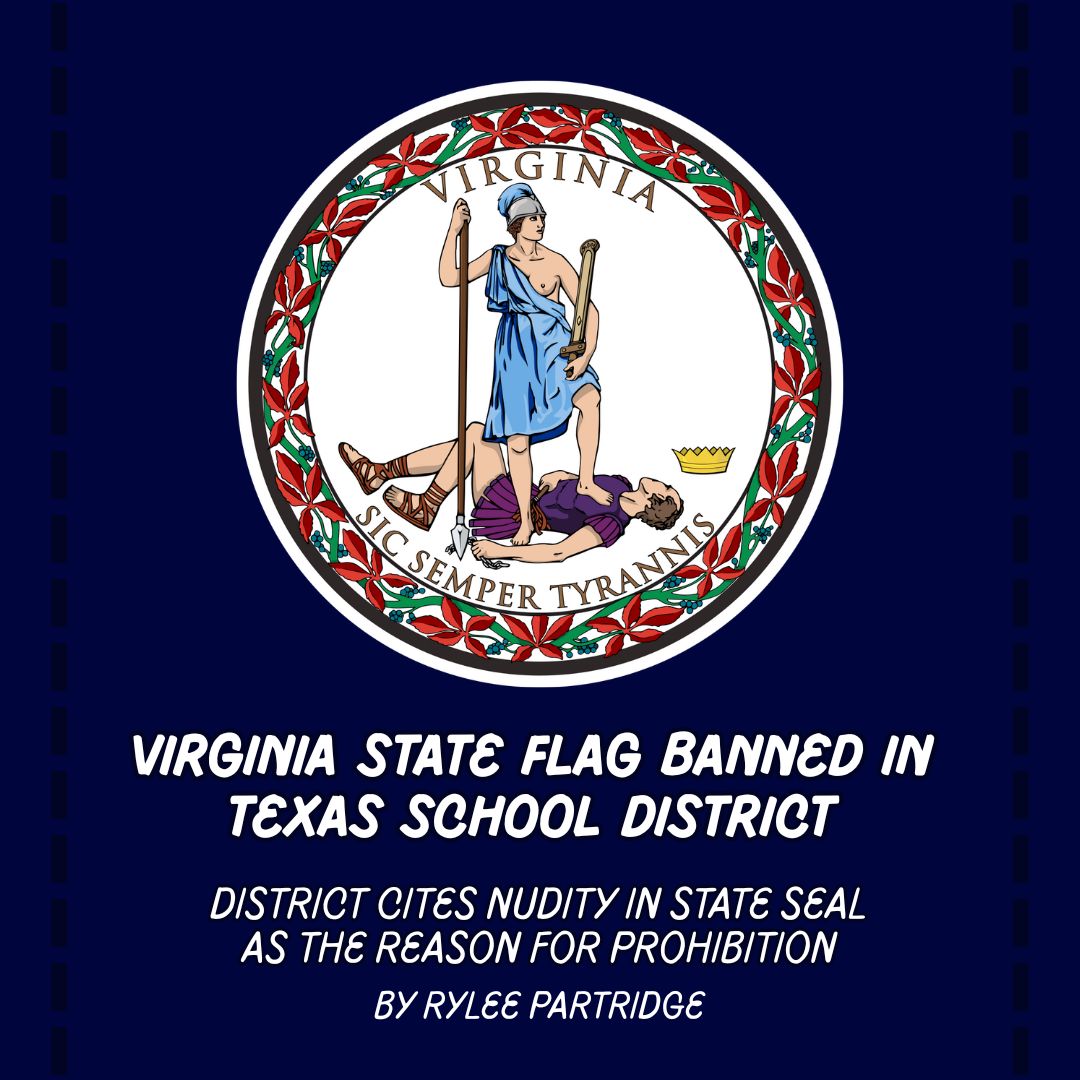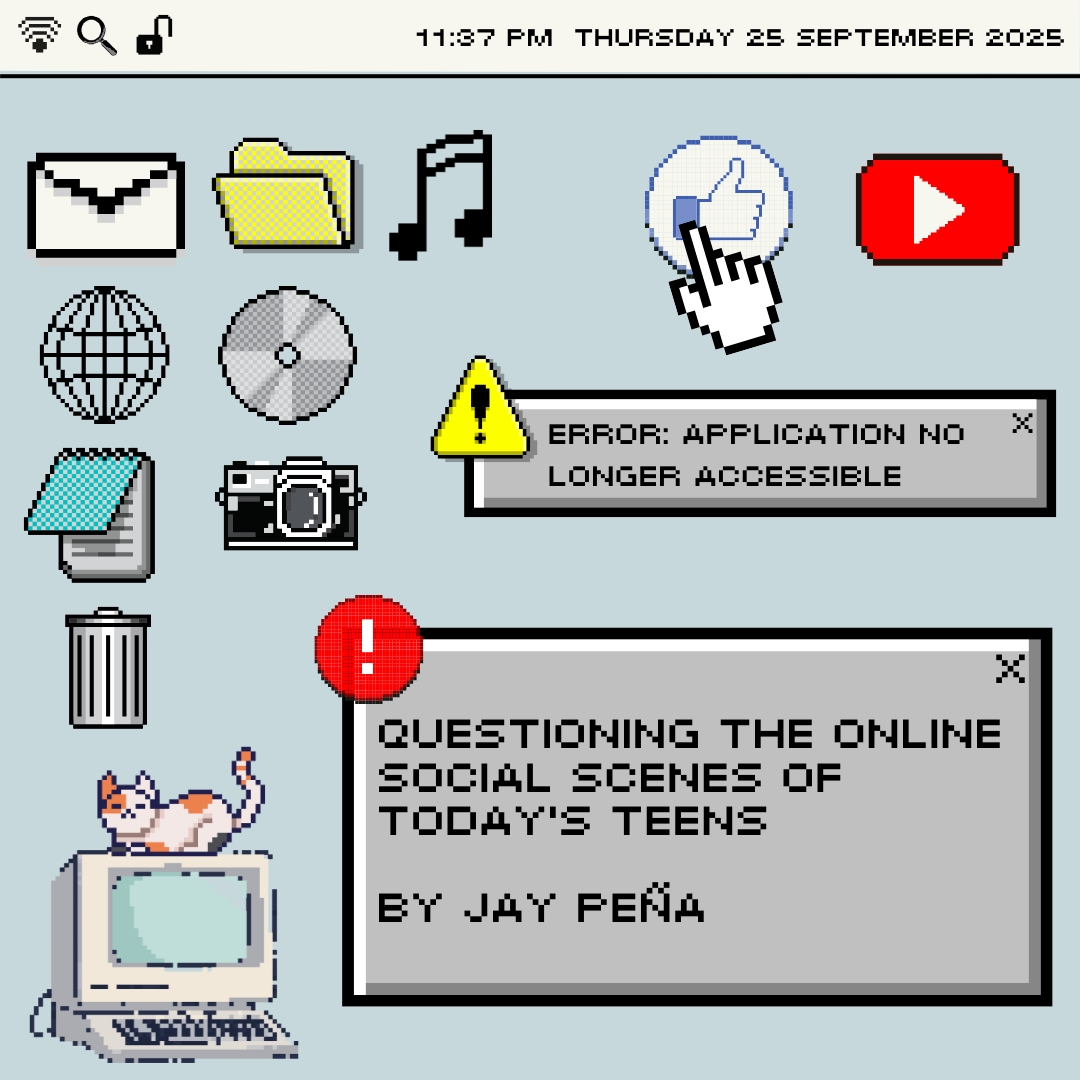One of the most important parts of a student’s senior year involves the unique challenge of answering the question, “What do I want to do after high school?” For seniors applying to a college or university for the upcoming Fall, however, things just got a bit more challenging.
The Free Application for Federal Student Aid, or FAFSA, is an online form that has granted millions of students economic aid for decades. It determines how much financial assistance a student is eligible for and directly relays this information to colleges the student is applying to. In the United States, the vast majority of higher-education schools require a FAFSA form submission from all applicants.
The FAFSA underwent major changes after the 2023 cycle, completely revamping the online application form for all class of 2024 users…for better or for worse.
“Every pilot year stinks. These challenges are definitely greater this year in comparison to other years. In a way though, the FAFSA itself and filing it is 10x easier,” said ACCESS Counselor Mrs. Akeda Hunter. “The process to filing [not so much]… So it’s either the smoothest situation ever, or it’s very rocky.”
While FAFSA has previously opened around November, the application was not made available until the first week of January in 2023. After a month online, many students have faced errors in the website and/or submission process.
Some of these errors were expected for a new website receiving millions of users within a week of launching.
“The only error I remember encountering was the site breaking down and lagging due to everyone trying to access it at the same time,” said senior Giselle Alegre, who started her FAFSA form soon after the initial launch.
However, most applicants quickly learned that there were going to be much more serious problems with FAFSA’s new setup than solely lag time.
“My SAI was not being calculated because of a missing signature that was signed on my behalf,” senior Sheridan Anthony recalls, “which I am now understanding prevents me from receiving college-specific scholarships because they go off of that number.”
Hunter has also noticed tremendous amounts of yet-to-be-solved faults with the FAFSA.
“The FAFSA should still be filed, but students will not be able to make edits and/or access their FAFSA Submission Summary until schools receive the form around the first half of March. A lot of things have gone wrong with it, and any edits that might need to go in there, we won’t be able to even look at it until then… which puts a lot of the strain on things,” said Hunter.
Other errors were reported as well. Social Security Numbers would appear as blank after input, information such as parent relationship status could not be changed or updated after submission, and all college portals have a definite “Incomplete” symbol next to a student applicant’s FAFSA Submission icon on application checklists.
On January 30th, FAFSA announced that forwarding to colleges for all applications would be delayed and that they would not be expected to arrive in the college’s hands until March or April. Previously, the expected personalized aid packets from colleges were predicted to be given no later than late February.
“Unfortunately, this does impact the amount of time students will have to make the best-informed decisions for the colleges,” Hunter said. “With finances in mind, which are very important, people are forced to change their minds all the time.”
In the weeks following the announcement, some colleges started responding to this delay by extending their “Preferred FAFSA Submission deadline,” which set the timeline of how long students may submit their FAFSA forms to be considered for need-based aid.
Virginia Commonwealth University extended their deadline to March 1st, while Emerson College extended theirs to April 15th. However, no colleges will receive any personal forms from applicants until FAFSA sends them to colleges, so any submission deadline beforehand seems ineffective.
Some schools have even begun to reach out to students directly about their current status with FAFSA, while trying to grasp financial information they could use for calculations.
“The benefit, I believe, is that schools have more time to be prepared for what they will have to calculate,” said Hunter. “Some have gone a further step to try to receive some information from students using their ‘Received’ email, or suggest a FAFSA aid estimator tool which you can see here: https://studentaid.gov/aid-estimator/.”
With the national “College Commitment Day” still being held on May 1st, many students are worrying about the logistics of being able to enroll in a college on time. However, Hunter reminds us that colleges and students are in the same boat as far as lacking information.
Despite FAFSA having time to work out the kinks, future filers are still not out of the woods entirely. Juniors are wondering how this may affect their FAFSA filing next year.
“I wish universities were more open and honest with their applicants on their processes with FAFSA, because I’m being left in the dark and it’s causing a lot of anxiety,” said Anthony. “The issue won’t go away if FAFSA leaves their applicants experiencing the same issues.”
On the contrary, senior Lucy Elmquiest is hopeful for the corrections FAFSA can make to their website in the future.
“I do agree that this form was easier [to complete than previous years], however, they had extra time to create it, and it still had many flaws. I am hopeful that in future years there will be fewer complications,” said Elmquiest.
Hunter believes that the lessons learned this year will benefit applicants in years to come.
“Hopefully next year, it should come out at its regular time [and] it should do these things correctly, but I’m saying should because… they should have opened January 31st with this financial information, and yet we still don’t have it right now,” said Hunter. “And although this year is tougher and there are more challenges, it is still assumed that more people will get aid this year than in years prior, so hopefully that is a more positive outlook.”
Despite FAFSA’s struggles in its pilot year, Hunter encourages seniors to file the FAFSA.
“The earlier you do it, in any situation, the more possible aid you will receive. And we do not want you to miss the aid you could get just because the FAFSA is put back.”
In addition to this, she suggests all FAFSA filers and contributors set up their FSA ID at least three days before completing their FAFSA form, to possibly avoid errors faced upon submission.
“My biggest issue right now is knowing that there are more complicated steps ahead of me and I am effectively being prevented from completing them because of the FAFSA errors,” said Anthony. “I don’t like feeling behind on something, and I feel very behind.”
A lot of good is coming out of the new FAFSA forms, including increased aid. Though, Hunter acknowledges that the good is causing a lot of other issues and stress.
“I was very prepared to complete this form and know what it looks like and everything else like that… However, it makes it hard for trust to really be brought [between me and students], especially [when] I’m saying, ‘Hey, it’s gonna come out at this time,’ and then they change it,” said Hunter.
Regardless, Hunter is doing her best to make sure students don’t feel alone when facing the stress of the FAFSA.












